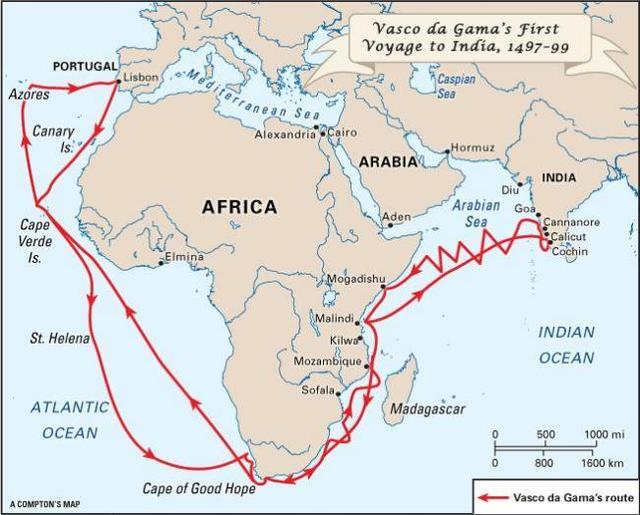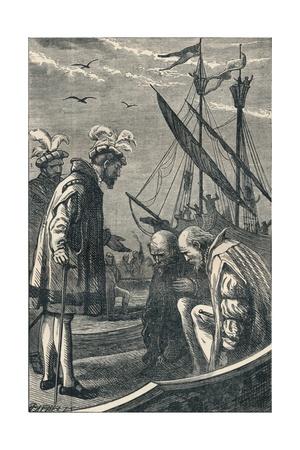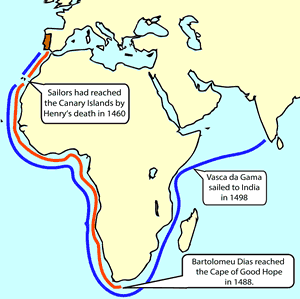

Manuel's reach extended further east, as he concluded a commercial treaty with Ming Dynasty China and in 1511 captured Malacca in what is now Malaysia. To administer Portuguese interests there, Manuel in 1505 appointed Francisco de Almeida as the first of many to hold the title of Viceroy of India. Portuguese traders brought back large amounts of spices, enriching the royal coffers to the extent that for a time, Manuel was the richest ruler in Europe. The voyages from Portugal to India proliferated, exceeding 250 during Manuel's time on the throne. He approved the voyage of Vasco Da Gama to India and followup the voyage of Perdo Álvares Cabral, which in 1500 found Brazil before reaching India. Manuel encouraged his country's expanding explorations of the world. King Manuel then married his wife's younger sister, Maria (right).

The young boy was heir to three thrones-Aragon, Castile, and Portugal-but died in 1500. She died giving birth to their son, Miguel, in 1498. In 1497, Manuel married Isabel, the widow of John II's son Afonso and, as the daughter of Ferdinand and Isabella, a crown princess of Aragon and Castile.

He found no support for the move, however, and, in 1493, named to succeed him Manuel. John had another son, Jorge, whose mother was not Leonor, and John wanted to name this other son as his successor. The boy died in a horse riding accident in 1491. The king and Queen Leonor had had a son, Afonso, whom they hoped would be the next king. King John II adopted Manuel when the boy was 15. In addition, Manuel's sister Leonor was the wife of King John II. His mother was Beatriz of Portugal, whose grandfather was King John I. His father, Ferdinand, Duke of Viseu, was the son of King Edward and the brother of King Afonso V. He had extensive ties to the royal family. He was born on May 31, 1469, in Alcochete, Portugal.

A rich and famous monarch, he presided over the further ascension of his country as a great power. Manuel I was King of Portugal for 26 years, at the end of the 15th Century and into the early 16th Century.


 0 kommentar(er)
0 kommentar(er)
